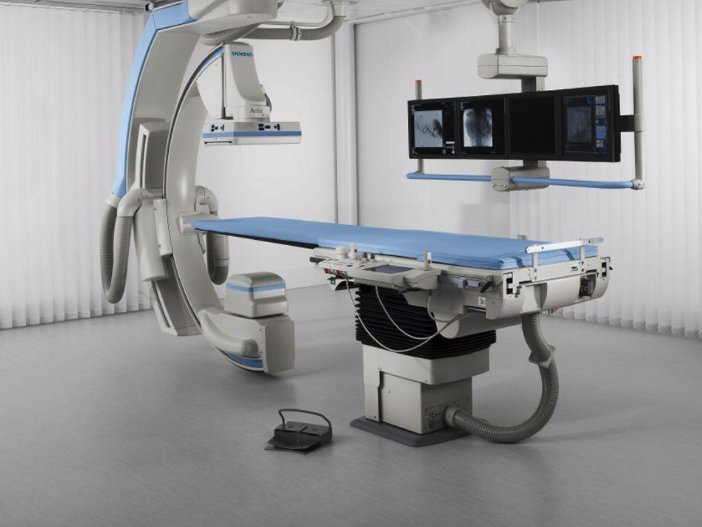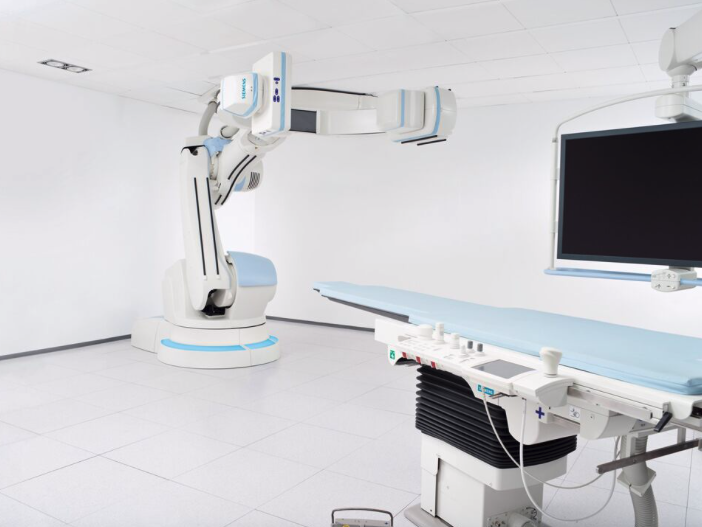The Best X-Ray Systems for Cath and EP Labs
In the Cath lab, time is valuable. The faster the clinical team can diagnose and treat a blockage the better the patient’s outcomes will be. It’s for this reason that the X-Ray is the most critical piece of equipment in the Cath lab. There are 4 main suppliers of X-Ray systems for Cath and EP labs. They are:
GE
Philips
Siemens
Canon
Each has their own perks and quirks, but all are great systems. Here’s an overview of the top 4 systems for Cath and EP labs:
GE Innova IGS 5
The GE Innova IGS 5 is a single plane X-ray system designed with Cath and EP labs in mind. It can be used for oncology and neuro interventions as well. It’s available in various detector configurations:
8.1 inches across
12.2 inches across
16.1 inches across
This flexibility allows hospitals to optimize their labs, as they only need to pay for the size of equipment they need. The offset C-arm is another unique feature, allowing for better access to the patients head for anesthesia and nursing as well as reducing the amount of gantry movement needed to scan from head to groin. The system comes with GE’s proprietary gantry positioning system, known as InnovaSense, which helps move the detector in the optimum position relative to the patient, increasing image quality and reducing radiation exposure.
Philips Azurion 7 C20 & F20
The Philips Azurion 7 series is a single plane X-ray system designed for both non-invasive and open procedures, making it a great fit for hybrid rooms. It features Philips Live Image Guidance systems, such as their StentBoost and EmboGuide, which support clinical workflow and make cases run smoothly. The system comes equipped with a 20” detector, measured from corner to corner.
The system comes with Philips KVM solution, called FlexSpot, allowing for consolidation of the displays in the control room on to one (or two) 27inch display. The Philips Azurion 7 can be mounted on the floor (the F20) or the ceiling (the C20), which is a nice option for labs looking to reduce the footprint of the system.
Siemens Artis zee
The Siemens Artis zee system has 4 configurations: The floor mounted single plane, the ceiling mounted single plane, the ceiling mounted dual plane and the robotic arm mounted single plane zeego. The systems can be configured with one of two detectors:
20 x 20 inch (28 across)
30 x 40 inch (50 across)
The Artis zee ceiling mounted system can hold projection on a particular region during gantry movements using Siemens InFocus and IsoTilt technology. This system is well suited for Cath labs that see a high percentage of peripheral cases due to its full body coverage.
A benefit to robotic arm mounted zeego is that it can be swung up and out of the way when not in use, allowing better access to the patient and optimization of infection control in hybrid operating rooms. The Siemens Artis zee can also be paired with the Stereotaxis NIOBE, allowing for superb guide wire and catheter steering support.
Canon Infinix
The Canon Infinix comes in 7 different configurations, from the budget friendly floor mounted Infinix Core+ all the way up to the Infinix-i 4D CT, which includes a CT scanner. For Cath labs the Infinix-i Core + and the Infinix-i Sky + are both great options, the Core being the floor mounted and the Sky being the ceiling mounted. They are available with the following detector choices:
8 x 8 inch (11” across)
12 x 12 inch (17” across)
12 x 16 inch (20” across)
The Sky + has 210 degrees of mobility and can travel at 80 degrees/sec around the patient, allowing for fast acquisitions that can be used to gather 3D images through digital subtraction angiography (DSA).
Closing Thoughts
Whether you’re constructing a new lab or updating an older lab, these 4 manufacturers all have options that work well. Which you choose will likely depend on what system your medical team is most comfortable with, what price you can negotiate and what features are necessary for your lab. When looking to upgrade an old room it’s worth doing a cost benefit analysis to ensure that upgrading is the most economical solution. Often times we hear hospitals are looking to upgrade because, after a new lab is constructed, the older labs see less use as the doctors prefer the larger display on the new system. In those cases we recommend extending the useful life of the lab via a large video retrofit upgrade, where the multiple monitors are replaced with a large display and the control room monitors are consolidated with a KVM. Doing this retrofit provides much of the benefits of a new system without the price tag of a new x-ray system. For more information about how to advance your interventional lab contact us.






